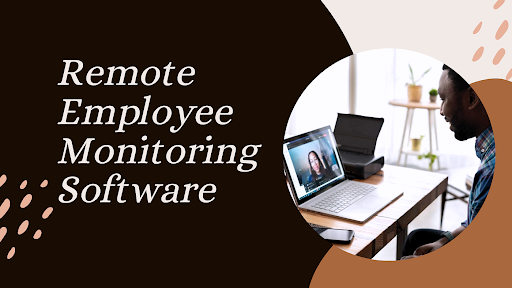Common Types Of Attacks On Automotive Software
integration in automotive systems has given rise to a fresh set of security risks. This article aims to provide an overview of the most common types of attacks on automotive software. The article will analyse the vulnerabilities and potential consequences of these attacks, ranging from remote hacking and denial-of-service attacks to malware and infections. In addition, the article will address the threats posed by data breaches, phishing and social engineering, physical attacks, wireless exploitation, and insider threats in the automotive industry.
Remote Hacking: Threats and Vulnerabilities
Remote intrusion poses significant hazards and vulnerabilities to automotive software systems. Due to the increasing connectivity and integration of vehicles with external networks, the risk of unauthorised access and manipulation by malicious actors has become urgent. Exploiting software vulnerabilities is a common form of remote hacking that gives perpetrators unauthorised access to a vehicle’s systems.
This could lead to unauthorised control of essential functions, the theft of sensitive data, or even physical harm to occupants. By manipulating wireless communication protocols, such as Bluetooth and Wi-Fi, contemporary vehicles are susceptible to remote hijacking. By intercepting or manipulating these signals, attackers may be able to breach the vehicle’s security and seize control of its various components.
Denial-of-Service Attacks: Disrupting Vehicle Functionality
By interrupting vehicle functionality, denial-of-service attacks pose a significant threat to the proper operation of automotive systems. The objective of these attacks is to render a vehicle’s network or computer systems inoperable. Critical functions such as braking, steering, and acceleration can be disrupted by denial-of-service attacks that overwhelm the target system with traffic or exploit software vulnerabilities.
This may result in severe consequences, including accidents and injuries. These attacks necessitate comprehensive security measures by vehicle manufacturers and software developers. Included in this are intrusion detection systems and network segmentation. To mitigate the risk of denial-of-service attacks, automotive system manufacturers, government agencies, and cybersecurity experts must collaborate to identify and rectify vulnerabilities.
Malware and Viruses: Infecting Automotive Systems
Malware and infections pose a significant threat to the proper functioning of automotive systems. They can infect the network or computer systems of the vehicle, preventing them from functioning as intended. These pernicious software programs are designed to gain unauthorised access, disrupt normal operations, or steal sensitive information. After malware and viruses have infected a vehicle’s systems, they can spread swiftly. They can impact numerous components, including the engine control unit, the infotainment system, and the braking system.
Consequences can range from the loss of control over essential system functions to system failure. In addition, malicious software and viruses can infiltrate the system via a variety of entry points. This includes exploitable software updates, infected external devices, and weaknesses in wireless communication protocols. To mitigate this risk, automakers and software developers must prioritise exhaustive security measures and regular software updates. These precautions are essential for protecting automotive systems from malware and virus attacks.
Data Breaches: Compromising Personal Information
Data breaches pose a substantial threat to personally identifiable information and could compromise sensitive data stored in automotive systems. As vehicles become increasingly networked and software-reliant, more personal information is collected and stored. This personal information may include basic details such as names and addresses, as well as more sensitive information such as financial and even medical records.
This data can be accessed by malicious actors in the event of a data breach, resulting in identity theft, financial fraud, and other detrimental outcomes for individuals. Moreover, the compromised information can be sold on the dark web, thereby perpetuating fraudulent activities. Automobile manufacturers and software developers must prioritise robust security measures and routinely update their systems to address new threats to reduce the risk of data breaches.
Physical Attacks: Tampering with Vehicle Components
Social engineering and phishing can exploit users’ vulnerabilities, but attacks on automotive software are not restricted to manipulating individuals. Physical assaults are another significant hazard to vehicle components. These attacks involve tampering with a vehicle’s engine control unit (ECU), sensors, or wiring systems. An adversary may gain unauthorised access to these components and alter their functionality, posing potential safety risks or allowing for unauthorised vehicle control.
Physical attacks can be carried out in a variety of ways, including physically gaining access to the vehicle, connecting unauthorised devices to its interfaces, and even remotely corrupting the firmware of the vehicle. Hardware and software-level security measures that assure the integrity and authenticity of vehicle components are required to prevent physical attacks.
Insider Threats: Risks from Within the Industry
In the automotive industry, insider threats pose significant risks because they involve individuals with access to and knowledge of the industry’s internal systems, which could compromise vehicle safety and security. These threats may emanate from current or former employees, contractors, or vendors who have access to confidential information and may use it for their benefit or to cause harm.
In the context of automotive software, insider threats can involve unauthorised access to sensitive data, tampering with software code, or introducing malicious code. These actions can lead to unauthorised control of vital vehicle functions, such as braking or steering, resulting in accidents and even fatalities.
Automotive companies must implement stringent access controls, routinely monitor system activity, and update their systems with the latest security standards like ISO 21434.
Conclusion
To create effective security measures, it is crucial to comprehend the common varieties of attacks on automotive software. The automotive industry confronts significant threats from remote cyberattacks, denial-of-service attacks, malware and viruses, data intrusions, phishing and social engineering, physical assaults, wireless attacks, and in-taking threats.
By addressing these vulnerabilities and implementing robust security protocols, manufacturers can better protect vehicles and ensure the privacy of their customers. The industry must maintain vigilance and proactivity in the face of frequently developing cyber threats.






